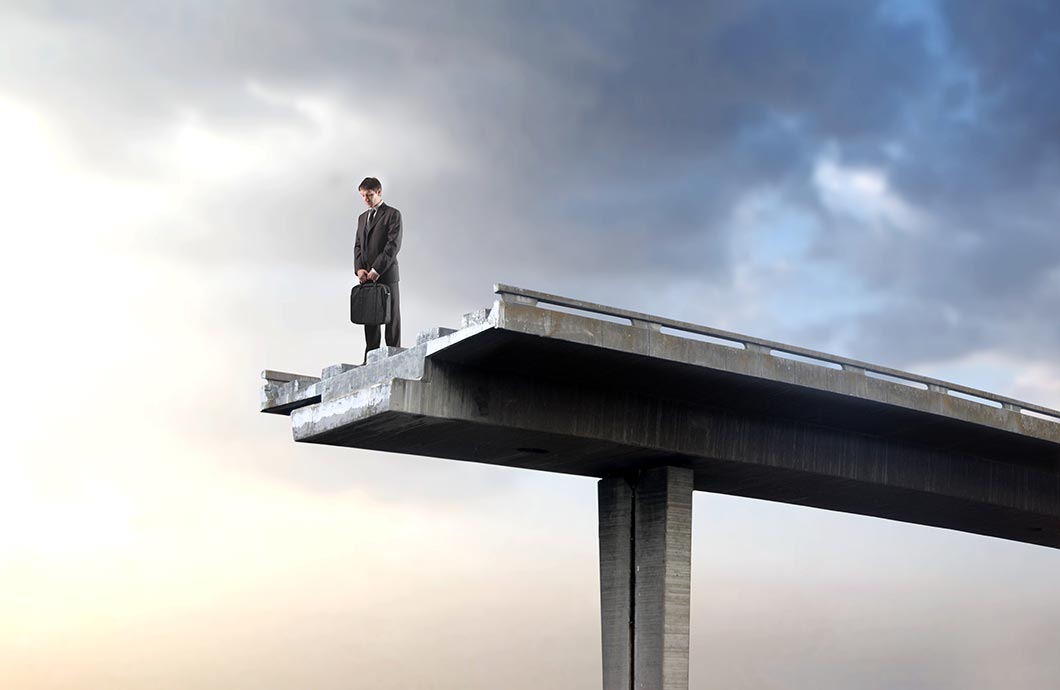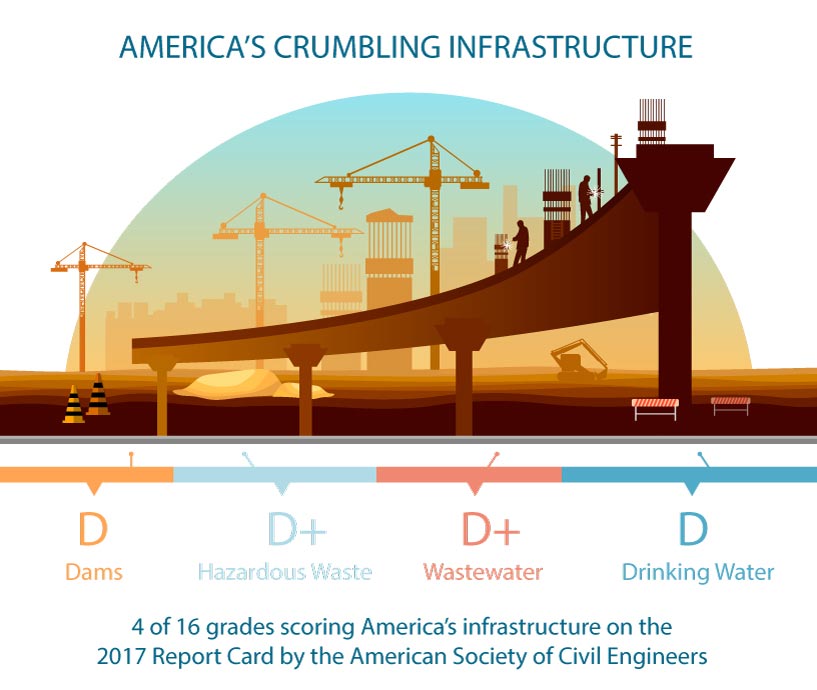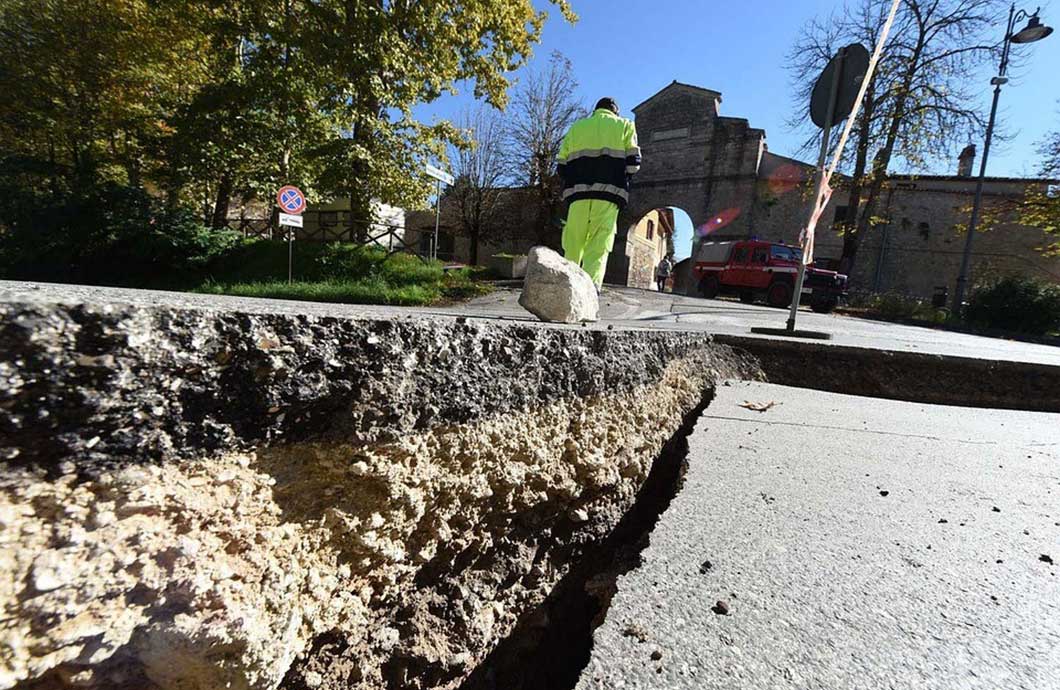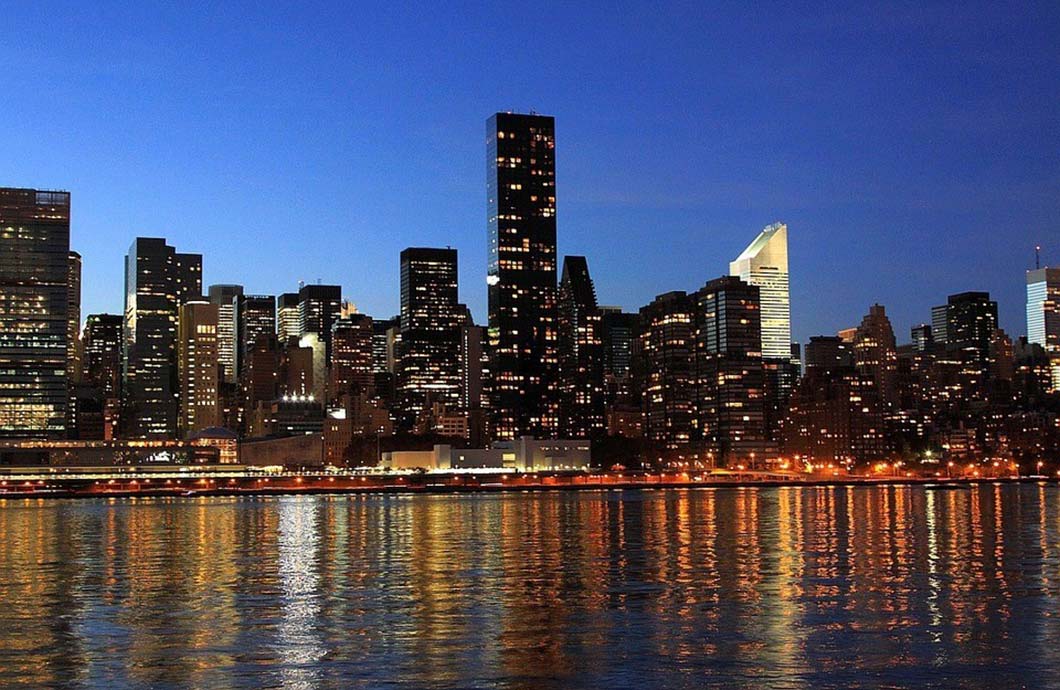
America's infrastructure is deteriorating and improvements are necessary. Just take a look around or turn on the news. Bridges, dams, highways, levees, waterways, hazardous waste, wastewater, energy, drinking water, you name it, and we need to address it. In the most recent 2017 report card, created by the American Society of Civil Engineers every four years, America's infrastructure scored a dismal D+.
What went wrong?

America once had a reputation for building things extremely fast and cheap – like the Empire State Building in 410 days – but not anymore. American infrastructure simply takes longer to build than it ever has, and projects carry astronomically high average construction costs compared to the rest of the world. The spending has grown so out of control that experts predict basic American infrastructure may soon become unaffordable within a short period of time – as in years, not decades.
Take America’s roadway construction, for example. The Federal Government spent $1.179 billion in June 2017 on road and highway construction alone, up from $519 million in June 2016 – a 127% spending increase! Aggressively repairing our roadways might sound like a good thing – and it is, to an extent – but as average construction costs continue to skyrocket every year, Congress elects not to raise rates on a gas tax that’s designed to pay for all of this spending.
The last year that the gas tax was properly adjusted was 1993.
Instead of budgeting the balance and raising the gas tax to an appropriate level, Congress has left it up to the states to levy taxes, charge highway tolls, and buy bonds in order to afford their road repairs and expansions. These temporary solutions are now coming to a critical failure as citizens and local government find themselves shouldering an unfair portion of the financial burden. Meanwhile, the Highway Trust Fund has been out of money since 2008, and it’s expected to reach a negative balance of $18 billion by 2021.

Cracked roads are not a good look for you, America.
So why does it cost so much money to repair American infrastructure? Why are some construction companies charging over $1 million dollars just to resurface a single mile of road? The answer is a mix between price-gouging and the privatization of the construction industry.
Experts point out that there is a shortage of skilled contractors in America, which allows them to set their own prices and encourage competitive bidding from developers. Not only does this constant bidding drive up the price, but it also substantially slows down project times as negotiations tend to be long and drawn out. Multiple contractors and sub-contractors often work on the same project at different times, causing further delays and inconsistencies in workmanship as they agree upon design implementations and other costly measures.
Nowhere is this more evident than New York city, where construction costs more than anywhere else in the world. The average construction costs in New York are $354.00 per square foot as of 2017, and new subway systems can cost over $1 billion for less than a half-mile. Construction workers get paid $100.00 an hour on average, and project managers admit that they are required to keep their projects overstaffed by law, which means costs are much higher than necessary. If these current construction trends keep up, then the rest of the country could soon follow.

New York is currently the most expensive city in the world to build in.
Contractors can hardly be blamed for raising the cost of their services in response to an increased demand – that’s just common sense and good business. However, if the government fails to regulate construction rates and lets them rise to the point where basic projects can no longer be afforded, then everyone will be out of a job.
Meanwhile, Environmental Impact Statements (EIS) – government documents discussing the possible environmental disturbances caused by a proposed project – are sometimes causing serious delays to American infrastructure projects as well. These well-intentioned environmental assessments took only two years to get through when they were first introduced in the 1970s, but now they can take over 8 years to complete (costing money the entire time). While EIS play a crucial role in regulating the country’s beautiful ecosystems and are absolutely necessary, the process needs to be heavily updated and streamlined.

EIS only account for 15% of all Federal highway programs, but they are causing delays.
Unfortunately, the government does not appear to be interested in correcting its irresponsible and sluggish spending behaviors, actively squashing relevant discussions without reason. In May of 2017, the Government Office of Accountability was scheduled to review the outrageous average construction costs in America in comparison to the rest of the world before the House and Senate, but this meeting was canceled. Aside from comparing prices on a world market, the purpose of this meeting was also to potentially change funding guidelines and regulations, as well as contracting practices.
If the Federal Government is not willing to review its current policies and procedures for repairing and maintaining American infrastructure, then the average cost of construction projects will almost inevitably continue to rise as a result. If anything, the fact that there is nothing left in the Highway Trust Fund shows what is at stake for the rest of our critical American infrastructure if this behavior continues.
Do you agree that high construction costs in America is a problem? Let us know on Facebook.